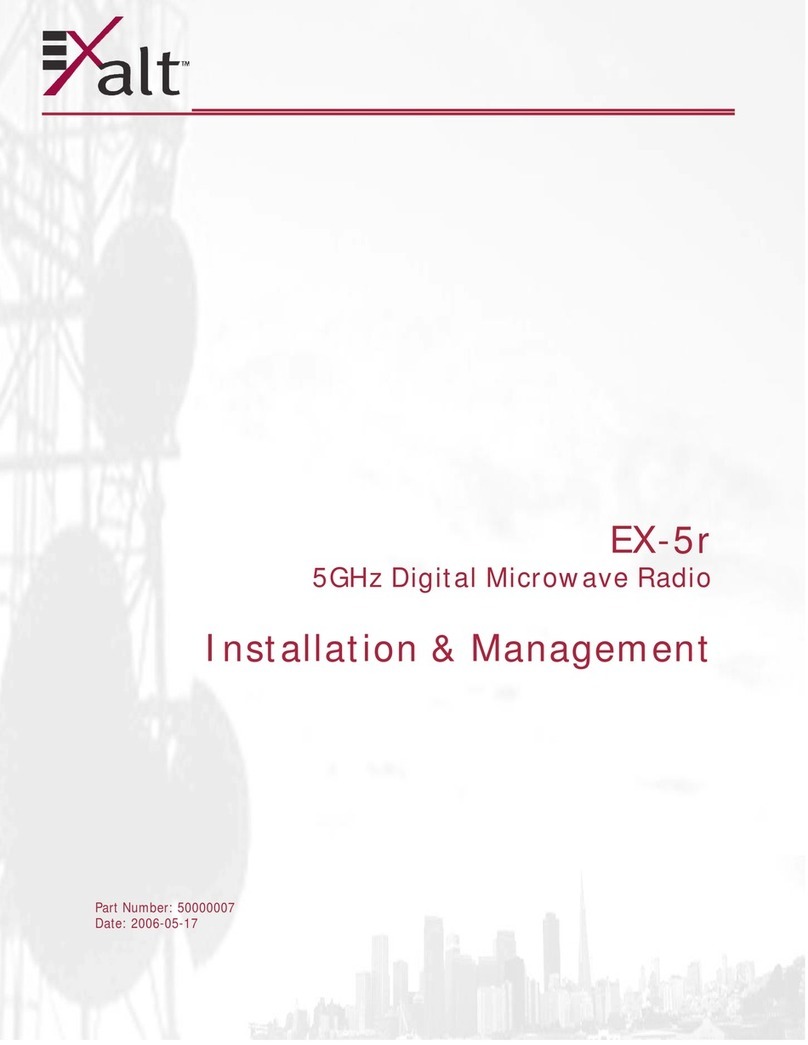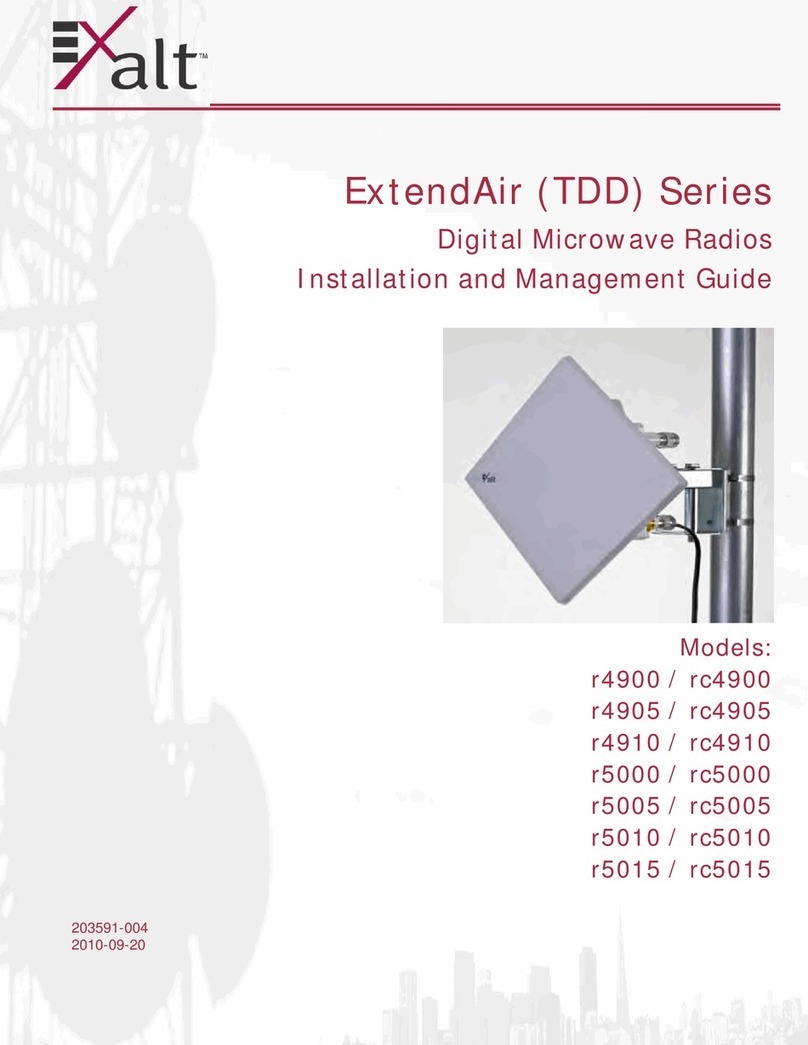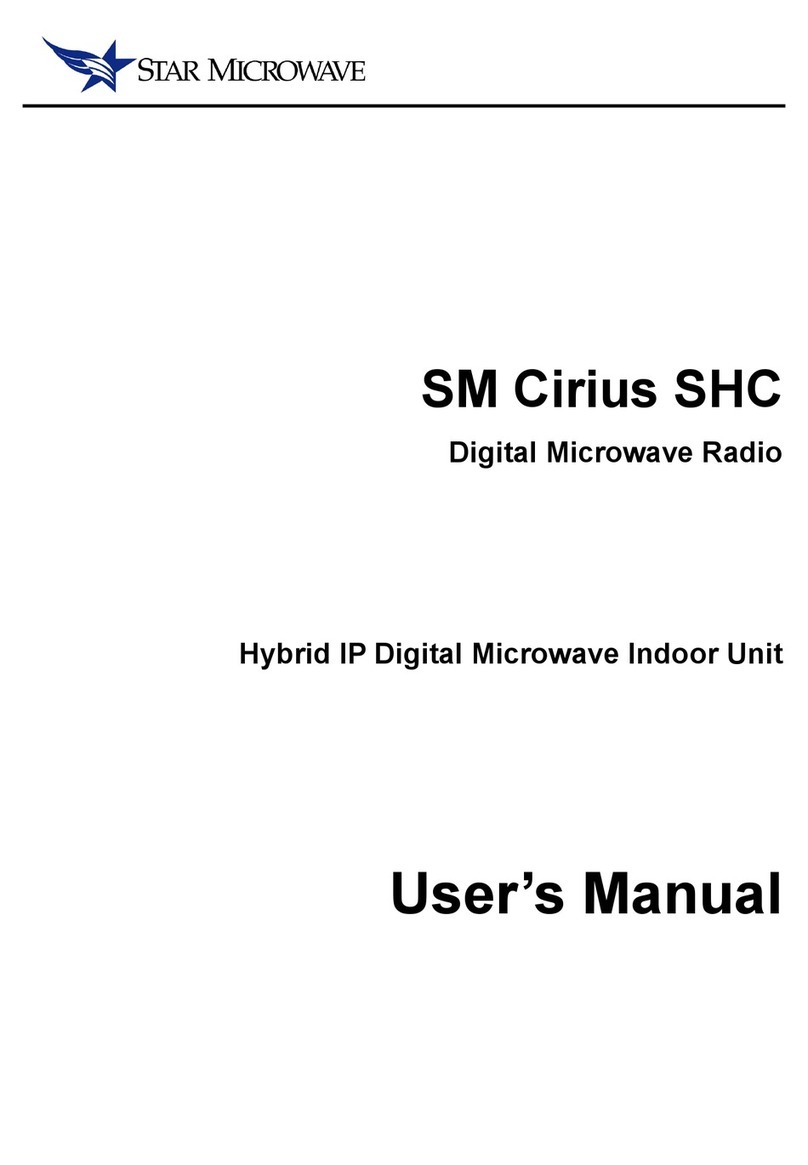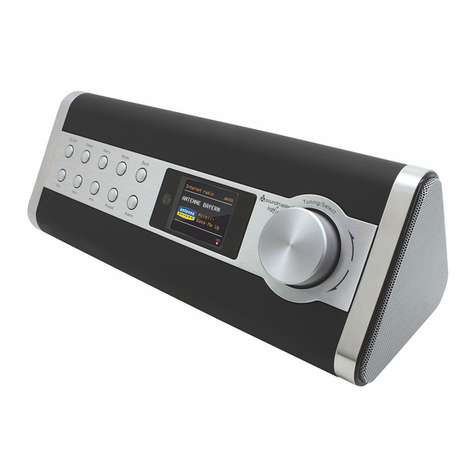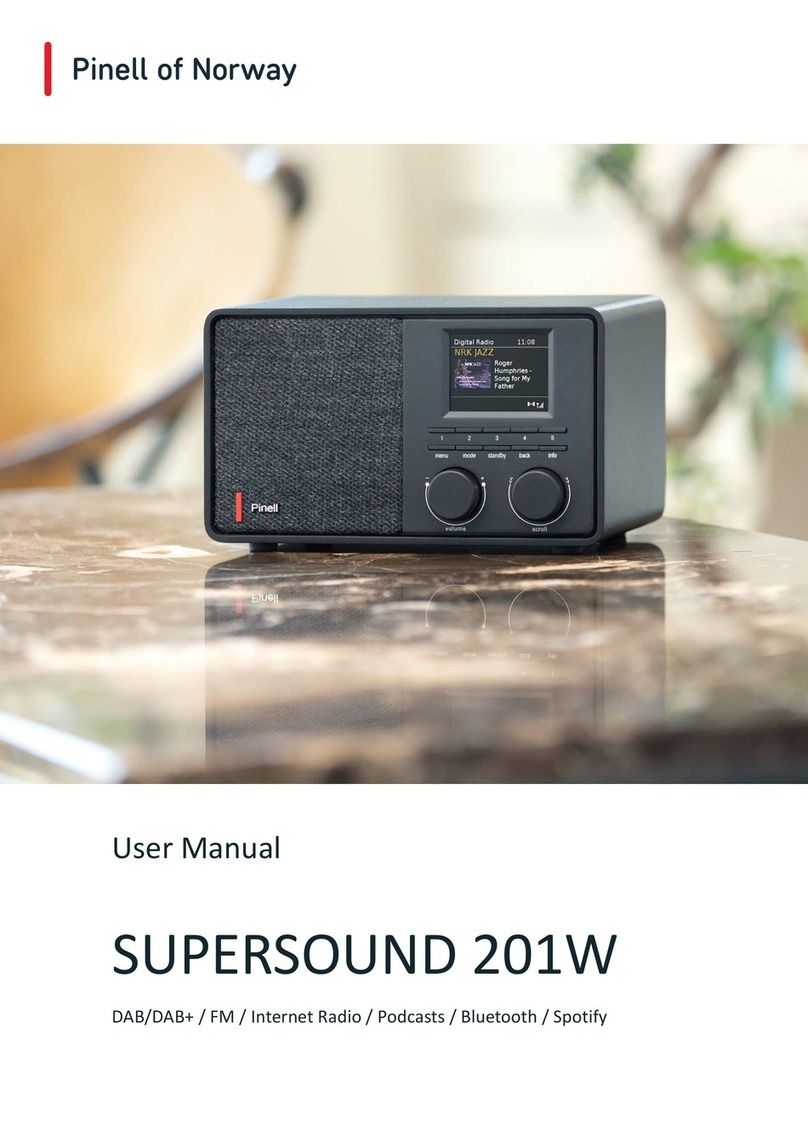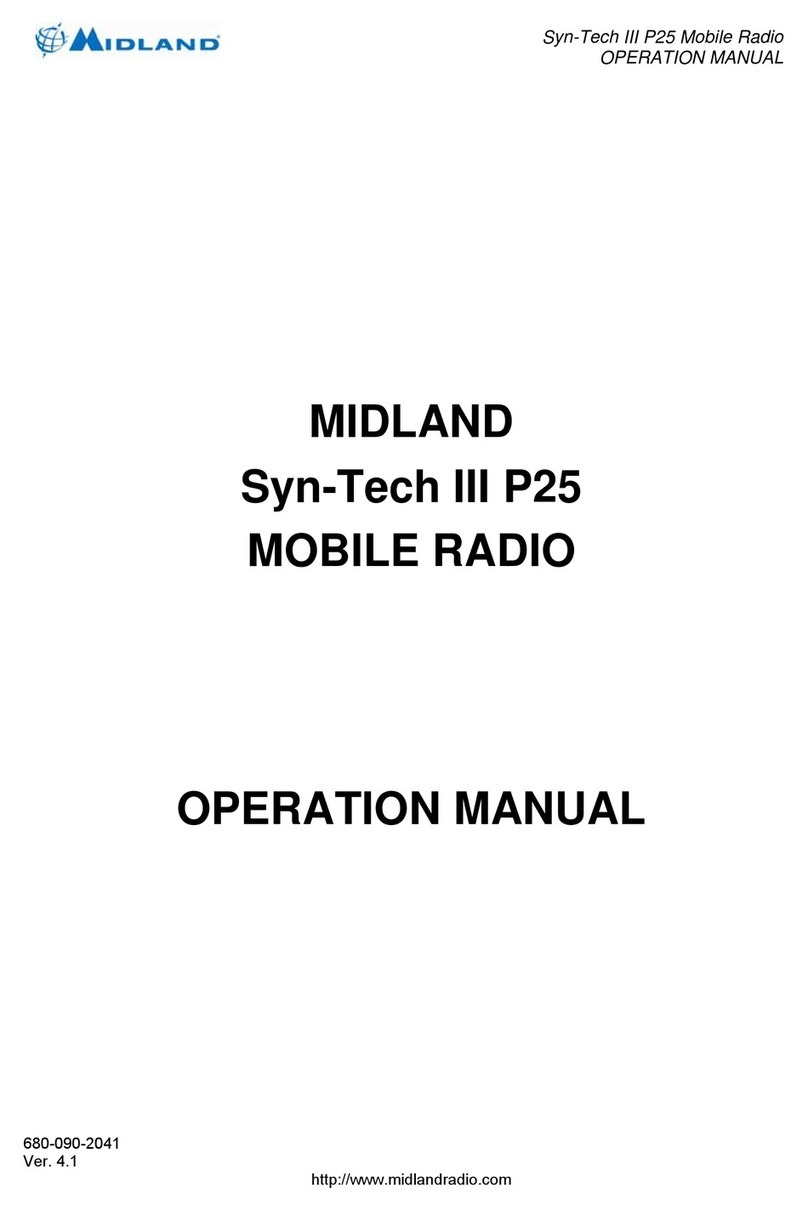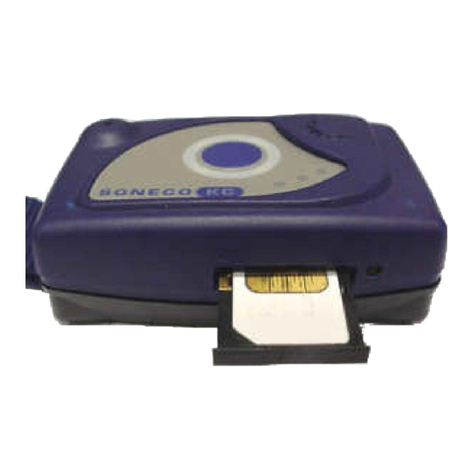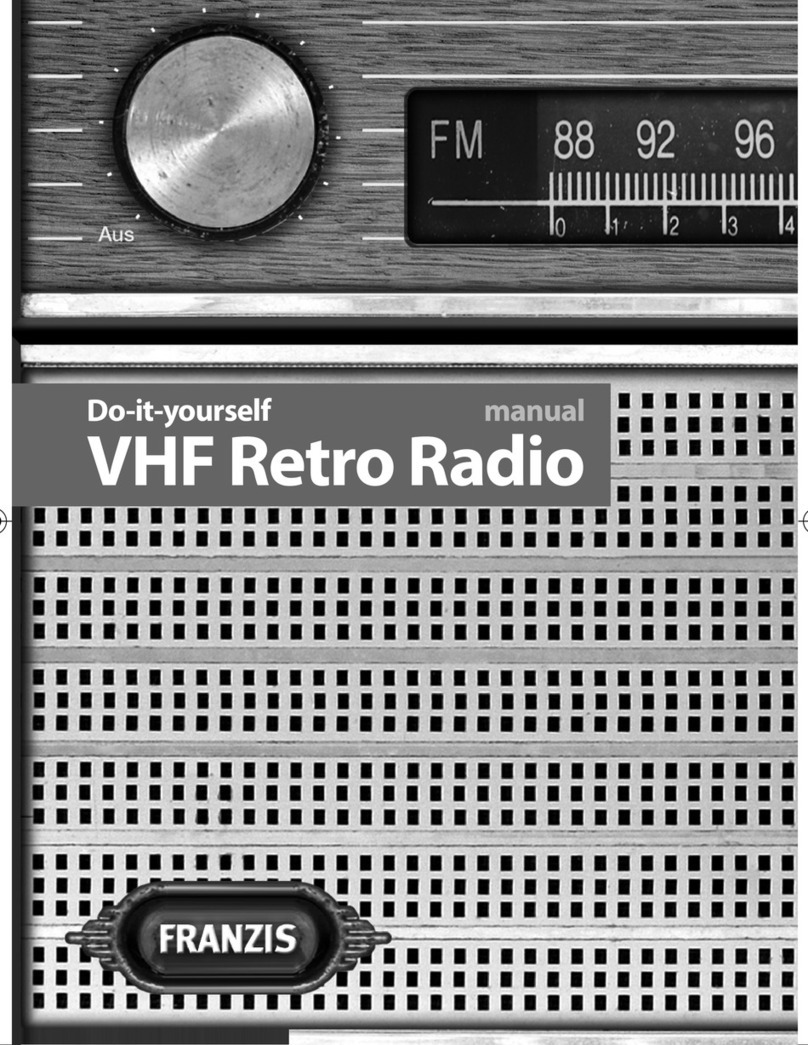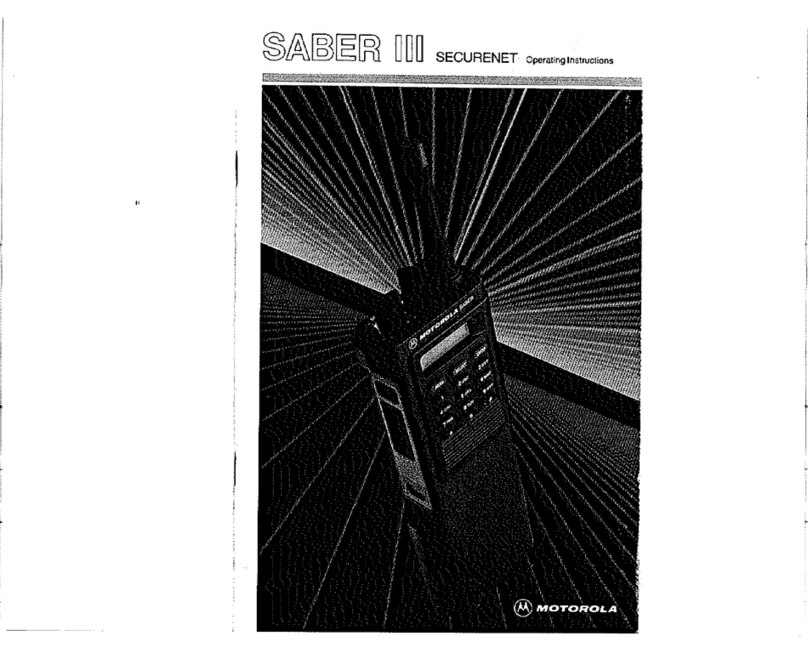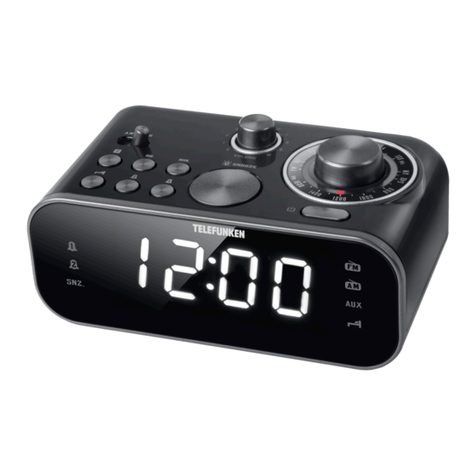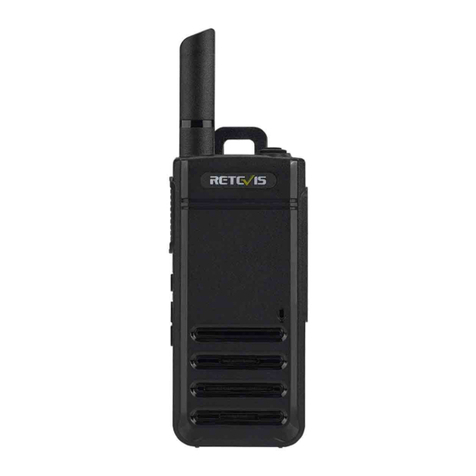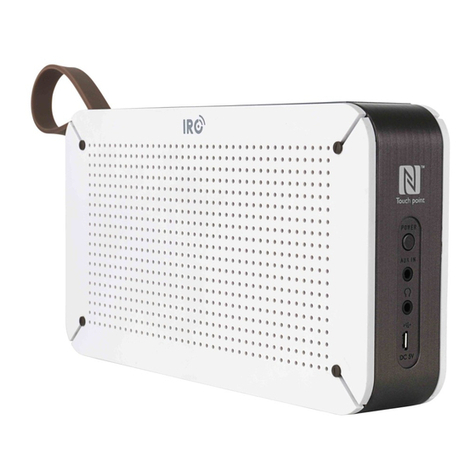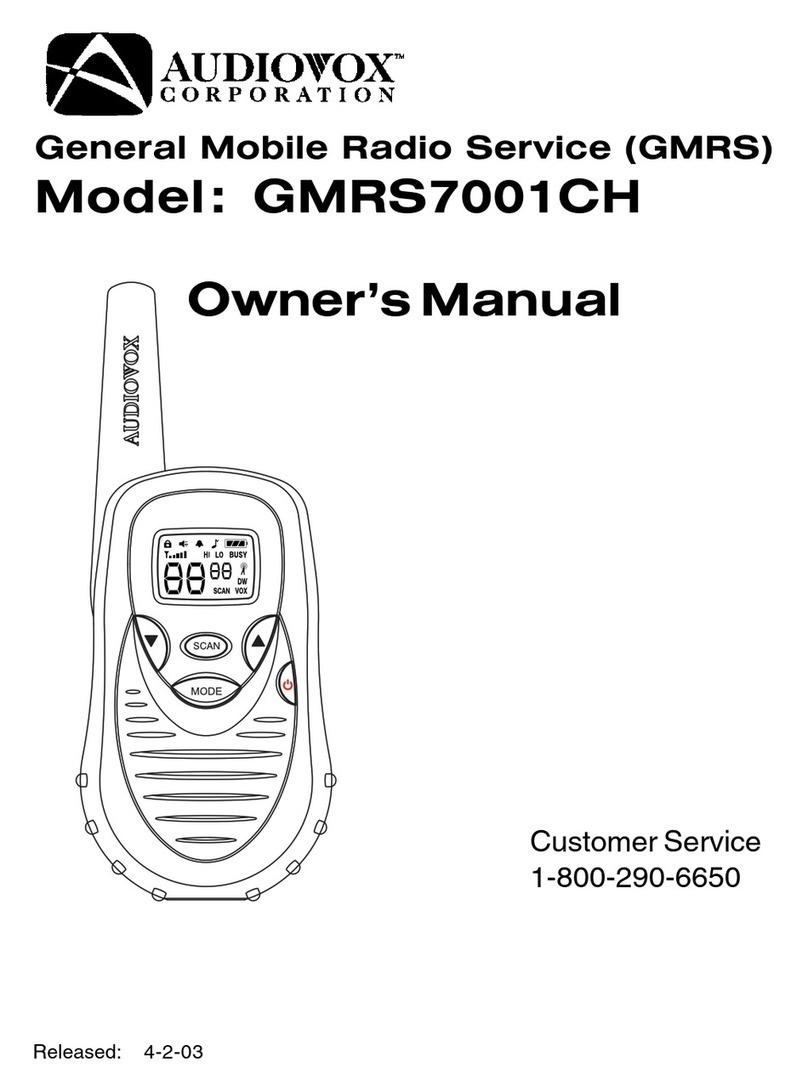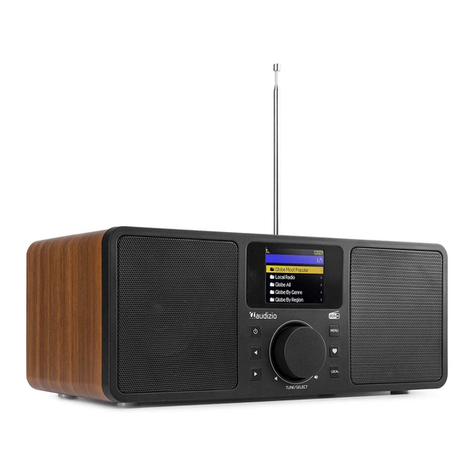Exalt EX-5i-DS3-GigE Programming manual

202675-005
2011-08-30
EX-i Series FDD
Digital Microwave Radios
Installation and Management Guide
Models:
EX-5i-DS3-GigE
EX-5/6i-DS3-GigE
EX-6i-DS3-GigE
EX-6i-4DS3-GigE
EX-6i-OC3-GigE
EX-11i-DS3-GigE
EX-11i-4DS3-GigE
EX-11i-OC3-GigE

Exalt Installation and Management Guide
EX-i Series FDD Digital Microwave Radios
ii 202675-005
2011-08-30
Legal Notice
The information contained herein is the property of Exalt Communications, Inc. (“Exalt”) and is
supplied without liability for errors or omissions. No part of this document may be reproduced, in any
form, except as authorized by contract or other written permission from the owner.
Any brand names and product names included in this manual are trademarks, registered trademarks, or
trade names of their respective holders.
The contents of this document are current as of the date of publication. Exalt reserves the right to
change the contents without prior notice.
The publication of information in this document does not imply freedom from patent or other rights of
Exalt or others.
© 2011 Exalt Communications Inc. All rights reserved.
The Exalt logo is a trademark of Exalt Communications, Inc.
Open-Source License Information
Per the terms of your Exalt Limited Hardware Warranty, Software License, and RMA Procedures
Agreement with Exalt Communications, Inc. and/or its subsidiaries, certain Third Party Software may
be provided with and as part of the Exalt products provided to you, and any such Third Party Software
files provided are governed by the terms of their separate Third Party Licenses, which licenses give
you at least the license rights licensed to you in the Exalt End User Agreement and may give you
additional license rights as to the Third Party Software, but only with respect to the particular Third
Party Software to which the Third Party License applies.
The Exalt Products may include or be bundled with some or all of the following third party software.
Copies of the copyright notices and license agreements for any or all of these may be requested by
Open Source Code License Agreement Website
Embedded Linux - OS
U-Boot
Boot Code. Both licensed under GPL Version 3 www.gnu.org
www.sourceforge.net
Busy Box Linux Commands. Licensed under GPL Version
2
www.gnu.org and
www.busybox.net
Scew Expat Wrapper. Licensed under LGPL Version
3
www.gnu.org
OpenSSL SSL Web Access. Licensed under dual license www.openssl.org
Net-SNMP SNMP Agent. Licensed under NetSNMP (see
Copyright Notices)
Dropbear SSH 2 Server; Expat - XML Parser; BarelyFitz
– Java Script Tabifier; and Flotr – Java Script
Plotting Library. All four are licensed under
MIT License
www.opensource.org/
licenses/mit-license.php
GoAhead Webserver Licensed under GoAhead License Agreement www.goahead.com

Exalt Installation and Management Guide
EX-i Series FDD Digital Microwave Radios
202675-005 iii
2011-08-30
Table of Contents
Legal Notice . . . . . . . . . . . . . . . . . . . . . . . . . . . . . . . . . . . . . . . . . . . . . . . . . . . . . . . . . . . . . . . ii
Open-Source License Information . . . . . . . . . . . . . . . . . . . . . . . . . . . . . . . . . . . . . . . . . . . . . . ii
List of Figures . . . . . . . . . . . . . . . . . . . . . . . . . . . . . . . . . . . . . . . . . . . . . . . . . . . . . . . . . . . . vi
List of Tables . . . . . . . . . . . . . . . . . . . . . . . . . . . . . . . . . . . . . . . . . . . . . . . . . . . . . . . . . . . . . vii
About this Document . . . . . . . . . . . . . . . . . . . . . . . . . . . . . . . . . . . . . . . . . . . . . . . . . . . . . . viii
Revision History . . . . . . . . . . . . . . . . . . . . . . . . . . . . . . . . . . . . . . . . . . . . . . . . . . . . . . viii
Icons . . . . . . . . . . . . . . . . . . . . . . . . . . . . . . . . . . . . . . . . . . . . . . . . . . . . . . . . . . . . . . . . viii
Introduction . . . . . . . . . . . . . . . . . . . . . . . . . . . . . . . . . . . . . . . . . . . . . . . . . . . . . . . . . . . . . . . 1
Related Documentation and Software . . . . . . . . . . . . . . . . . . . . . . . . . . . . . . . . . . . . . . . . 1
The EX-i Series FDD Digital Microwave Radios . . . . . . . . . . . . . . . . . . . . . . . . . . . . . . . 1
Basic Features . . . . . . . . . . . . . . . . . . . . . . . . . . . . . . . . . . . . . . . . . . . . . . . . . . . . . . . . . . 3
Pre-installation Tasks . . . . . . . . . . . . . . . . . . . . . . . . . . . . . . . . . . . . . . . . . . . . . . . . . . . . . . . . 5
Link Engineering and Site Planning . . . . . . . . . . . . . . . . . . . . . . . . . . . . . . . . . . . . . . . . . 5
Familiarization with the EX-i Series FDD Radios . . . . . . . . . . . . . . . . . . . . . . . . . . . . . . 5
Shipping Box Contents . . . . . . . . . . . . . . . . . . . . . . . . . . . . . . . . . . . . . . . . . . . . . . . . . 6
Initial Configuration and Back-to-Back Bench Test . . . . . . . . . . . . . . . . . . . . . . . . . . . . . 6
RF Output Power Setting . . . . . . . . . . . . . . . . . . . . . . . . . . . . . . . . . . . . . . . . . . . . . . . . . . 7
Capacity Configuration . . . . . . . . . . . . . . . . . . . . . . . . . . . . . . . . . . . . . . . . . . . . . . . . . . . 8
Radio Configuration . . . . . . . . . . . . . . . . . . . . . . . . . . . . . . . . . . . . . . . . . . . . . . . . . . . . . 8
Virtual Local Area Network (VLAN) . . . . . . . . . . . . . . . . . . . . . . . . . . . . . . . . . . . . . . . . 9
Simple Network Management Protocol (SNMP) . . . . . . . . . . . . . . . . . . . . . . . . . . . . . . 10
System Installation and Initiation Process . . . . . . . . . . . . . . . . . . . . . . . . . . . . . . . . . . . . . . . 11
Record Keeping . . . . . . . . . . . . . . . . . . . . . . . . . . . . . . . . . . . . . . . . . . . . . . . . . . . . . . . . 12
Installation . . . . . . . . . . . . . . . . . . . . . . . . . . . . . . . . . . . . . . . . . . . . . . . . . . . . . . . . . . . . . . . 13
Mechanical Configuration and Mounting . . . . . . . . . . . . . . . . . . . . . . . . . . . . . . . . . . . . 13
Rack Mounting . . . . . . . . . . . . . . . . . . . . . . . . . . . . . . . . . . . . . . . . . . . . . . . . . . . . . . 13
Table or Rack Shelf Mounting the System. . . . . . . . . . . . . . . . . . . . . . . . . . . . . . . . . 14
Radio Ports and Indicators . . . . . . . . . . . . . . . . . . . . . . . . . . . . . . . . . . . . . . . . . . . . . . . . 14
Connector Overview . . . . . . . . . . . . . . . . . . . . . . . . . . . . . . . . . . . . . . . . . . . . . . . . . . 14
LED Indicators . . . . . . . . . . . . . . . . . . . . . . . . . . . . . . . . . . . . . . . . . . . . . . . . . . . . . . 16
RMT (Remote) Button . . . . . . . . . . . . . . . . . . . . . . . . . . . . . . . . . . . . . . . . . . . . . . . . 17
Rear Panel Diplexer Orientation . . . . . . . . . . . . . . . . . . . . . . . . . . . . . . . . . . . . . . . . . . . 18
Non-Standard Frequency Pairs . . . . . . . . . . . . . . . . . . . . . . . . . . . . . . . . . . . . . . . . . . 19
Antenna Connection . . . . . . . . . . . . . . . . . . . . . . . . . . . . . . . . . . . . . . . . . . . . . . . . . . 20
Space Diversity . . . . . . . . . . . . . . . . . . . . . . . . . . . . . . . . . . . . . . . . . . . . . . . . . . . . . . 20
Power . . . . . . . . . . . . . . . . . . . . . . . . . . . . . . . . . . . . . . . . . . . . . . . . . . . . . . . . . . . . . . . . 21
Terminating the RF Connector . . . . . . . . . . . . . . . . . . . . . . . . . . . . . . . . . . . . . . . . . . 21
DC Power . . . . . . . . . . . . . . . . . . . . . . . . . . . . . . . . . . . . . . . . . . . . . . . . . . . . . . . . . . 21
Reset to Critical Factory Settings . . . . . . . . . . . . . . . . . . . . . . . . . . . . . . . . . . . . . . . . . . 22
Antenna/Transmission System . . . . . . . . . . . . . . . . . . . . . . . . . . . . . . . . . . . . . . . . . . . . 23
Initial Antenna Mounting . . . . . . . . . . . . . . . . . . . . . . . . . . . . . . . . . . . . . . . . . . . . . . 23
Transmission Line from Antenna to Egress . . . . . . . . . . . . . . . . . . . . . . . . . . . . . . . . 24
RF Lightning Arrestor . . . . . . . . . . . . . . . . . . . . . . . . . . . . . . . . . . . . . . . . . . . . . . . . 25
Transmission Line from Egress to Radio . . . . . . . . . . . . . . . . . . . . . . . . . . . . . . . . . . 25
Antenna Alignment . . . . . . . . . . . . . . . . . . . . . . . . . . . . . . . . . . . . . . . . . . . . . . . . . . . . . 26
Configuration and Management . . . . . . . . . . . . . . . . . . . . . . . . . . . . . . . . . . . . . . . . . . . . . . 28

Exalt Installation and Management Guide
EX-i Series FDD Digital Microwave Radios
iv 202675-005
2011-08-30
Command Line Interface (CLI) . . . . . . . . . . . . . . . . . . . . . . . . . . . . . . . . . . . . . . . . . . . . 28
Telnet into the Command Line Interface (CLI) . . . . . . . . . . . . . . . . . . . . . . . . . . . . . . . . 28
Connect to the Radio in a Telnet Session . . . . . . . . . . . . . . . . . . . . . . . . . . . . . . . . . . 28
Telnet . . . . . . . . . . . . . . . . . . . . . . . . . . . . . . . . . . . . . . . . . . . . . . . . . . . . . . . . . . . . . 28
Exalt Graphical User Interface (GUI) . . . . . . . . . . . . . . . . . . . . . . . . . . . . . . . . . . . . . . . 29
Preparing to Connect . . . . . . . . . . . . . . . . . . . . . . . . . . . . . . . . . . . . . . . . . . . . . . . . . 29
Make Connections . . . . . . . . . . . . . . . . . . . . . . . . . . . . . . . . . . . . . . . . . . . . . . . . . . . 30
Log In . . . . . . . . . . . . . . . . . . . . . . . . . . . . . . . . . . . . . . . . . . . . . . . . . . . . . . . . . . . . . 30
Login Privileges . . . . . . . . . . . . . . . . . . . . . . . . . . . . . . . . . . . . . . . . . . . . . . . . . . . . . 30
Quick Start . . . . . . . . . . . . . . . . . . . . . . . . . . . . . . . . . . . . . . . . . . . . . . . . . . . . . . . . . . . . 31
Navigating the GUI . . . . . . . . . . . . . . . . . . . . . . . . . . . . . . . . . . . . . . . . . . . . . . . . . . . . . 32
Summary Status Section . . . . . . . . . . . . . . . . . . . . . . . . . . . . . . . . . . . . . . . . . . . . . . . 32
Navigation Panel. . . . . . . . . . . . . . . . . . . . . . . . . . . . . . . . . . . . . . . . . . . . . . . . . . . . . 33
Radio Information Page . . . . . . . . . . . . . . . . . . . . . . . . . . . . . . . . . . . . . . . . . . . . . . . . . . 34
Administration Settings Page . . . . . . . . . . . . . . . . . . . . . . . . . . . . . . . . . . . . . . . . . . . . . . 35
NTP and Time Zone Configurations . . . . . . . . . . . . . . . . . . . . . . . . . . . . . . . . . . . . . . . . 37
Simple Network Management Protocol (SNMP) Configuration . . . . . . . . . . . . . . . . . . . 38
SNMP v1/v2c/v3 Support Options . . . . . . . . . . . . . . . . . . . . . . . . . . . . . . . . . . . . . . . 38
SNMP Traps . . . . . . . . . . . . . . . . . . . . . . . . . . . . . . . . . . . . . . . . . . . . . . . . . . . . . . . . 39
File Transfer Page . . . . . . . . . . . . . . . . . . . . . . . . . . . . . . . . . . . . . . . . . . . . . . . . . . . . . . 41
File Activation Page . . . . . . . . . . . . . . . . . . . . . . . . . . . . . . . . . . . . . . . . . . . . . . . . . . . . . 44
System Configuration Page . . . . . . . . . . . . . . . . . . . . . . . . . . . . . . . . . . . . . . . . . . . . . . . 45
Allocation Page . . . . . . . . . . . . . . . . . . . . . . . . . . . . . . . . . . . . . . . . . . . . . . . . . . . . . . . . 49
Ethernet Interface Configuration Page . . . . . . . . . . . . . . . . . . . . . . . . . . . . . . . . . . . . . . 50
T1/E1 Configuration Pages . . . . . . . . . . . . . . . . . . . . . . . . . . . . . . . . . . . . . . . . . . . . . . . 52
T1 Interface Configuration Page. . . . . . . . . . . . . . . . . . . . . . . . . . . . . . . . . . . . . . . . . 52
E1, DS3, and OC3 Configuration Pages. . . . . . . . . . . . . . . . . . . . . . . . . . . . . . . . . . . 53
E1 Interface Configuration Page. . . . . . . . . . . . . . . . . . . . . . . . . . . . . . . . . . . . . . . . . 53
DS3 and OC3 Interface Configuration Pages . . . . . . . . . . . . . . . . . . . . . . . . . . . . . . . 54
Loopback . . . . . . . . . . . . . . . . . . . . . . . . . . . . . . . . . . . . . . . . . . . . . . . . . . . . . . . . . . 56
MHS Configuration Page . . . . . . . . . . . . . . . . . . . . . . . . . . . . . . . . . . . . . . . . . . . . . . . . . 58
VLAN Configuration Page . . . . . . . . . . . . . . . . . . . . . . . . . . . . . . . . . . . . . . . . . . . . . . . 59
Ethernet Rate Limiting Page . . . . . . . . . . . . . . . . . . . . . . . . . . . . . . . . . . . . . . . . . . . . . . 61
Ethernet Learning Page . . . . . . . . . . . . . . . . . . . . . . . . . . . . . . . . . . . . . . . . . . . . . . . . . . 62
Syslog Configuration Page . . . . . . . . . . . . . . . . . . . . . . . . . . . . . . . . . . . . . . . . . . . . . . . 63
Ethernet Aggregation . . . . . . . . . . . . . . . . . . . . . . . . . . . . . . . . . . . . . . . . . . . . . . . . . . . . 64
Cross Connect (X Connect) Page . . . . . . . . . . . . . . . . . . . . . . . . . . . . . . . . . . . . . . . . . . 65
Alarms Page . . . . . . . . . . . . . . . . . . . . . . . . . . . . . . . . . . . . . . . . . . . . . . . . . . . . . . . . . . . 66
MHS Status Page . . . . . . . . . . . . . . . . . . . . . . . . . . . . . . . . . . . . . . . . . . . . . . . . . . . . . . . 69
Performance Page . . . . . . . . . . . . . . . . . . . . . . . . . . . . . . . . . . . . . . . . . . . . . . . . . . . . . . 70
ATPC Statistics Page . . . . . . . . . . . . . . . . . . . . . . . . . . . . . . . . . . . . . . . . . . . . . . . . . . . . 73
Event Log Page . . . . . . . . . . . . . . . . . . . . . . . . . . . . . . . . . . . . . . . . . . . . . . . . . . . . . . . . 74
User Throughput Page . . . . . . . . . . . . . . . . . . . . . . . . . . . . . . . . . . . . . . . . . . . . . . . . . . . 75
Diagnostic Charts Page . . . . . . . . . . . . . . . . . . . . . . . . . . . . . . . . . . . . . . . . . . . . . . . . . . 77
Ethernet Utilization Page . . . . . . . . . . . . . . . . . . . . . . . . . . . . . . . . . . . . . . . . . . . . . . . . . 79
PA Control Page . . . . . . . . . . . . . . . . . . . . . . . . . . . . . . . . . . . . . . . . . . . . . . . . . . . . . . . 80
Spectrum Analyzer . . . . . . . . . . . . . . . . . . . . . . . . . . . . . . . . . . . . . . . . . . . . . . . . . . . . . 81

Exalt Installation and Management Guide
EX-i Series FDD Digital Microwave Radios
202675-005 v
2011-08-30
Reboot Page . . . . . . . . . . . . . . . . . . . . . . . . . . . . . . . . . . . . . . . . . . . . . . . . . . . . . . . . . . . 84
Manual Page . . . . . . . . . . . . . . . . . . . . . . . . . . . . . . . . . . . . . . . . . . . . . . . . . . . . . . . . . . 85
Specifications . . . . . . . . . . . . . . . . . . . . . . . . . . . . . . . . . . . . . . . . . . . . . . . . . . . . . . . . . . . . . 86
Physical Specifications . . . . . . . . . . . . . . . . . . . . . . . . . . . . . . . . . . . . . . . . . . . . . . . . . . 86
Common System Specifications . . . . . . . . . . . . . . . . . . . . . . . . . . . . . . . . . . . . . . . . . . . 86
EX-6i System Specifications (all models) . . . . . . . . . . . . . . . . . . . . . . . . . . . . . . . . . . . . 87
EX-11i System Specifications (all models) . . . . . . . . . . . . . . . . . . . . . . . . . . . . . . . . . . . 88
Interfaces . . . . . . . . . . . . . . . . . . . . . . . . . . . . . . . . . . . . . . . . . . . . . . . . . . . . . . . . . . . . . 89
Interface Connections . . . . . . . . . . . . . . . . . . . . . . . . . . . . . . . . . . . . . . . . . . . . . . . . . . . . . . 91
T1/E1 Connections . . . . . . . . . . . . . . . . . . . . . . . . . . . . . . . . . . . . . . . . . . . . . . . . . . . . . 91
Ethernet Connections . . . . . . . . . . . . . . . . . . . . . . . . . . . . . . . . . . . . . . . . . . . . . . . . . . . . 92
Alarm Connector . . . . . . . . . . . . . . . . . . . . . . . . . . . . . . . . . . . . . . . . . . . . . . . . . . . . . . . 93
Console Connector . . . . . . . . . . . . . . . . . . . . . . . . . . . . . . . . . . . . . . . . . . . . . . . . . . . . . . 94
DC Power Connector . . . . . . . . . . . . . . . . . . . . . . . . . . . . . . . . . . . . . . . . . . . . . . . . . . . . 95
Troubleshooting . . . . . . . . . . . . . . . . . . . . . . . . . . . . . . . . . . . . . . . . . . . . . . . . . . . . . . . . . . . 96
General Practices . . . . . . . . . . . . . . . . . . . . . . . . . . . . . . . . . . . . . . . . . . . . . . . . . . . . . . . 96
Typical Indications of Issues . . . . . . . . . . . . . . . . . . . . . . . . . . . . . . . . . . . . . . . . . . . . . . 97
Improper RF Cable Termination . . . . . . . . . . . . . . . . . . . . . . . . . . . . . . . . . . . . . . . . . . . 98
Multipath Propagation . . . . . . . . . . . . . . . . . . . . . . . . . . . . . . . . . . . . . . . . . . . . . . . . . . . 98
RF Interference . . . . . . . . . . . . . . . . . . . . . . . . . . . . . . . . . . . . . . . . . . . . . . . . . . . . . . . . 98
Path Obstruction . . . . . . . . . . . . . . . . . . . . . . . . . . . . . . . . . . . . . . . . . . . . . . . . . . . . . . . 99
Misaligned Antenna . . . . . . . . . . . . . . . . . . . . . . . . . . . . . . . . . . . . . . . . . . . . . . . . . . . . . 99
Faulty Antenna . . . . . . . . . . . . . . . . . . . . . . . . . . . . . . . . . . . . . . . . . . . . . . . . . . . . . . . . . 99
Improper Grounding . . . . . . . . . . . . . . . . . . . . . . . . . . . . . . . . . . . . . . . . . . . . . . . . . . . . 99
Insufficient Link Margin . . . . . . . . . . . . . . . . . . . . . . . . . . . . . . . . . . . . . . . . . . . . . . . . . 99
Moisture in the Transmission System . . . . . . . . . . . . . . . . . . . . . . . . . . . . . . . . . . . . . . 100
Back-to-back Bench Testing . . . . . . . . . . . . . . . . . . . . . . . . . . . . . . . . . . . . . . . . . . . . . . . . 101
Basic Test . . . . . . . . . . . . . . . . . . . . . . . . . . . . . . . . . . . . . . . . . . . . . . . . . . . . . . . . . . . . 101
Specification Performance Verification . . . . . . . . . . . . . . . . . . . . . . . . . . . . . . . . . . . . . 102
General Compliance and Safety . . . . . . . . . . . . . . . . . . . . . . . . . . . . . . . . . . . . . . . . . . . . . 104
Safety Notices . . . . . . . . . . . . . . . . . . . . . . . . . . . . . . . . . . . . . . . . . . . . . . . . . . . . . . . . . . . 105
Regulatory Notices . . . . . . . . . . . . . . . . . . . . . . . . . . . . . . . . . . . . . . . . . . . . . . . . . . . . . . . 106
United States Compliance . . . . . . . . . . . . . . . . . . . . . . . . . . . . . . . . . . . . . . . . . . . . . . . 106
Federal Communications Commission (FCC), United States . . . . . . . . . . . . . . . . . 106
Canada Compliance . . . . . . . . . . . . . . . . . . . . . . . . . . . . . . . . . . . . . . . . . . . . . . . . . . . . 107
Industry Canada (IC), Canada (for 5GHz models) . . . . . . . . . . . . . . . . . . . . . . . . . . 107
Antennas Supported in Canada. . . . . . . . . . . . . . . . . . . . . . . . . . . . . . . . . . . . . . . . . 107
Regulatory Compliance . . . . . . . . . . . . . . . . . . . . . . . . . . . . . . . . . . . . . . . . . . . . . . . . . . . . 108
EIRP Limits for the United States and Canada . . . . . . . . . . . . . . . . . . . . . . . . . . . . . . . . . . 109
5725–5850 MHz Band . . . . . . . . . . . . . . . . . . . . . . . . . . . . . . . . . . . . . . . . . . . . . . . 109
Licensing 6 and 11GHz Models . . . . . . . . . . . . . . . . . . . . . . . . . . . . . . . . . . . . . . . . . . . . . 110
United States . . . . . . . . . . . . . . . . . . . . . . . . . . . . . . . . . . . . . . . . . . . . . . . . . . . . . . . . . 110
Canada . . . . . . . . . . . . . . . . . . . . . . . . . . . . . . . . . . . . . . . . . . . . . . . . . . . . . . . . . . . . . . 110
Antennas 5GHz Models . . . . . . . . . . . . . . . . . . . . . . . . . . . . . . . . . . . . . . . . . . . . . . . . . . . 111
Exalt Limited Hardware Warranty . . . . . . . . . . . . . . . . . . . . . . . . . . . . . . . . . . . . . . . . . . . 113
Copyright Notices . . . . . . . . . . . . . . . . . . . . . . . . . . . . . . . . . . . . . . . . . . . . . . . . . . . . . . . . 118
Index . . . . . . . . . . . . . . . . . . . . . . . . . . . . . . . . . . . . . . . . . . . . . . . . . . . . . . . . . . . . . . . . . . 122

Exalt Installation and Management Guide
EX-i Series FDD Digital Microwave Radios
vi 202675-005
2011-08-30
List of Figures
Figure 1 EX-6i-DS3-GigE Digital Microwave Radio . . . . . . . . . . . . . . . . . . . . . . . . . . . . . . 1
Figure 2 Indoor mount interconnection . . . . . . . . . . . . . . . . . . . . . . . . . . . . . . . . . . . . . . . . . 3
Figure 3 Enclosure mount interconnection. . . . . . . . . . . . . . . . . . . . . . . . . . . . . . . . . . . . . . . 4
Figure 4 Radio installation tasks . . . . . . . . . . . . . . . . . . . . . . . . . . . . . . . . . . . . . . . . . . . . . 11
Figure 5 Front flush mount configuration . . . . . . . . . . . . . . . . . . . . . . . . . . . . . . . . . . . . . . 13
Figure 6 Front projection mount configuration . . . . . . . . . . . . . . . . . . . . . . . . . . . . . . . . . . 13
Figure 7 Rear flush mount configuration . . . . . . . . . . . . . . . . . . . . . . . . . . . . . . . . . . . . . . . 14
Figure 8 Rear projection mount configuration . . . . . . . . . . . . . . . . . . . . . . . . . . . . . . . . . . . 14
Figure 9 Primary front panel connectors . . . . . . . . . . . . . . . . . . . . . . . . . . . . . . . . . . . . . . . 15
Figure 10 DS3 connectors and grounding switches . . . . . . . . . . . . . . . . . . . . . . . . . . . . . . . . 16
Figure 11 Rear panel without diplexers . . . . . . . . . . . . . . . . . . . . . . . . . . . . . . . . . . . . . . . . . 18
Figure 12 Diplexer labeling . . . . . . . . . . . . . . . . . . . . . . . . . . . . . . . . . . . . . . . . . . . . . . . . . . 18
Figure 13 Diplexer orientation for a typical 'link' of radios . . . . . . . . . . . . . . . . . . . . . . . . . . 19
Figure 14 Typical Space Diversity diplexer configuration . . . . . . . . . . . . . . . . . . . . . . . . . . 20
Figure 15 DC connectors . . . . . . . . . . . . . . . . . . . . . . . . . . . . . . . . . . . . . . . . . . . . . . . . . . . . 22
Figure 16 CLI root menu . . . . . . . . . . . . . . . . . . . . . . . . . . . . . . . . . . . . . . . . . . . . . . . . . . . . 29
Figure 17 Initiating the browser connection. . . . . . . . . . . . . . . . . . . . . . . . . . . . . . . . . . . . . . 30
Figure 18 Browser Login screen . . . . . . . . . . . . . . . . . . . . . . . . . . . . . . . . . . . . . . . . . . . . . . 30
Figure 19 Radio Information page . . . . . . . . . . . . . . . . . . . . . . . . . . . . . . . . . . . . . . . . . . . . . 31
Figure 20 Exalt GUI window description . . . . . . . . . . . . . . . . . . . . . . . . . . . . . . . . . . . . . . . 32
Figure 21 Summary status information . . . . . . . . . . . . . . . . . . . . . . . . . . . . . . . . . . . . . . . . . 33
Figure 22 Radio Information page . . . . . . . . . . . . . . . . . . . . . . . . . . . . . . . . . . . . . . . . . . . . . 34
Figure 23 Administration Settings page . . . . . . . . . . . . . . . . . . . . . . . . . . . . . . . . . . . . . . . . . 35
Figure 24 NTP and Time Zone Configurations page . . . . . . . . . . . . . . . . . . . . . . . . . . . . . . . 37
Figure 25 SNMP Configuration page. . . . . . . . . . . . . . . . . . . . . . . . . . . . . . . . . . . . . . . . . . . 38
Figure 26 Trap Configuration page . . . . . . . . . . . . . . . . . . . . . . . . . . . . . . . . . . . . . . . . . . . . 39
Figure 27 File Transfer page . . . . . . . . . . . . . . . . . . . . . . . . . . . . . . . . . . . . . . . . . . . . . . . . . 41
Figure 28 File Transfer page—download file link . . . . . . . . . . . . . . . . . . . . . . . . . . . . . . . . . 42
Figure 29 File Activation page . . . . . . . . . . . . . . . . . . . . . . . . . . . . . . . . . . . . . . . . . . . . . . . . 44
Figure 30 System Configuration page . . . . . . . . . . . . . . . . . . . . . . . . . . . . . . . . . . . . . . . . . . 45
Figure 31 Allocation page . . . . . . . . . . . . . . . . . . . . . . . . . . . . . . . . . . . . . . . . . . . . . . . . . . . 49
Figure 32 Ethernet Interface Configuration page. . . . . . . . . . . . . . . . . . . . . . . . . . . . . . . . . . 50
Figure 33 T1 Interface Configuration page . . . . . . . . . . . . . . . . . . . . . . . . . . . . . . . . . . . . . . 53
Figure 34 E1 Interface Configuration page . . . . . . . . . . . . . . . . . . . . . . . . . . . . . . . . . . . . . . 54
Figure 35 DS3 Interface Configuration page . . . . . . . . . . . . . . . . . . . . . . . . . . . . . . . . . . . . . 55
Figure 36 OC3 Configuration page . . . . . . . . . . . . . . . . . . . . . . . . . . . . . . . . . . . . . . . . . . . . 56
Figure 37 External (remote) loopback . . . . . . . . . . . . . . . . . . . . . . . . . . . . . . . . . . . . . . . . . . 57
Figure 38 External (local) loopback . . . . . . . . . . . . . . . . . . . . . . . . . . . . . . . . . . . . . . . . . . . . 57
Figure 39 MHS Configuration page . . . . . . . . . . . . . . . . . . . . . . . . . . . . . . . . . . . . . . . . . . . . 58
Figure 40 VLAN Configuration page. . . . . . . . . . . . . . . . . . . . . . . . . . . . . . . . . . . . . . . . . . . 59
Figure 41 Ethernet Rate Limiting page . . . . . . . . . . . . . . . . . . . . . . . . . . . . . . . . . . . . . . . . . 61
Figure 42 Ethernet Learning page . . . . . . . . . . . . . . . . . . . . . . . . . . . . . . . . . . . . . . . . . . . . . 62
Figure 43 Syslog Configuration page. . . . . . . . . . . . . . . . . . . . . . . . . . . . . . . . . . . . . . . . . . . 63
Figure 44 Ethernet Aggregation page. . . . . . . . . . . . . . . . . . . . . . . . . . . . . . . . . . . . . . . . . . . 64
Figure 45 Cross Connect (X Connect) page. . . . . . . . . . . . . . . . . . . . . . . . . . . . . . . . . . . . . . 65
Figure 46 Alarms page . . . . . . . . . . . . . . . . . . . . . . . . . . . . . . . . . . . . . . . . . . . . . . . . . . . . . . 66

Exalt Installation and Management Guide
EX-i Series FDD Digital Microwave Radios
202675-005 vii
2011-08-30
Figure 47 MHS Status page . . . . . . . . . . . . . . . . . . . . . . . . . . . . . . . . . . . . . . . . . . . . . . . . . . 69
Figure 48 Performance page. . . . . . . . . . . . . . . . . . . . . . . . . . . . . . . . . . . . . . . . . . . . . . . . . . 70
Figure 49 Performance page with ACM statistics . . . . . . . . . . . . . . . . . . . . . . . . . . . . . . . . . 72
Figure 50 ATPC Statistics page . . . . . . . . . . . . . . . . . . . . . . . . . . . . . . . . . . . . . . . . . . . . . . . 73
Figure 51 Event Log page . . . . . . . . . . . . . . . . . . . . . . . . . . . . . . . . . . . . . . . . . . . . . . . . . . . 74
Figure 52 User Throughput page . . . . . . . . . . . . . . . . . . . . . . . . . . . . . . . . . . . . . . . . . . . . . . 75
Figure 53 User Throughput Help page. . . . . . . . . . . . . . . . . . . . . . . . . . . . . . . . . . . . . . . . . . 76
Figure 54 Diagnostic Charts page . . . . . . . . . . . . . . . . . . . . . . . . . . . . . . . . . . . . . . . . . . . . . 77
Figure 55 Ethernet Utilization page . . . . . . . . . . . . . . . . . . . . . . . . . . . . . . . . . . . . . . . . . . . . 79
Figure 56 PA Control page. . . . . . . . . . . . . . . . . . . . . . . . . . . . . . . . . . . . . . . . . . . . . . . . . . . 80
Figure 57 Spectrum Analyzer page . . . . . . . . . . . . . . . . . . . . . . . . . . . . . . . . . . . . . . . . . . . . 81
Figure 58 Spectrum analyzer graph example . . . . . . . . . . . . . . . . . . . . . . . . . . . . . . . . . . . . . 82
Figure 59 Reboot page . . . . . . . . . . . . . . . . . . . . . . . . . . . . . . . . . . . . . . . . . . . . . . . . . . . . . . 84
Figure 60 Manual page. . . . . . . . . . . . . . . . . . . . . . . . . . . . . . . . . . . . . . . . . . . . . . . . . . . . . . 85
Figure 61 T1/E1 connectors . . . . . . . . . . . . . . . . . . . . . . . . . . . . . . . . . . . . . . . . . . . . . . . . . . 91
Figure 62 Ethernet connectors (ETH1 and ETH2). . . . . . . . . . . . . . . . . . . . . . . . . . . . . . . . . 92
Figure 63 Alarm Connector . . . . . . . . . . . . . . . . . . . . . . . . . . . . . . . . . . . . . . . . . . . . . . . . . . 93
Figure 64 Console Connector. . . . . . . . . . . . . . . . . . . . . . . . . . . . . . . . . . . . . . . . . . . . . . . . . 94
Figure 65 DC Power connector . . . . . . . . . . . . . . . . . . . . . . . . . . . . . . . . . . . . . . . . . . . . . . . 95
Figure 66 Basic back-to-back bench test configuration . . . . . . . . . . . . . . . . . . . . . . . . . . . . 101
List of Tables
Table 1 Factory default settings . . . . . . . . . . . . . . . . . . . . . . . . . . . . . . . . . . . . . . . . . . . . . . 9
Table 2 Front Panel Connectors . . . . . . . . . . . . . . . . . . . . . . . . . . . . . . . . . . . . . . . . . . . . . 15
Table 3 LED indicators . . . . . . . . . . . . . . . . . . . . . . . . . . . . . . . . . . . . . . . . . . . . . . . . . . . . 16
Table 4 Default login information. . . . . . . . . . . . . . . . . . . . . . . . . . . . . . . . . . . . . . . . . . . . 31
Table 5 Alarm status indicators. . . . . . . . . . . . . . . . . . . . . . . . . . . . . . . . . . . . . . . . . . . . . . 66
Table 6 Additional alarm status indicators . . . . . . . . . . . . . . . . . . . . . . . . . . . . . . . . . . . . . 68
Table 7 Supported 5GHz antennas . . . . . . . . . . . . . . . . . . . . . . . . . . . . . . . . . . . . . . . . . . 111

Exalt Installation and Management Guide
EX-i Series FDD Digital Microwave Radios
viii 202675-005
2011-08-30
About this Document
This manual provides a complete description of the EX-i Series FDD family of Exalt Digital
Microwave Radios and related software. This manual provides planners, engineers, installers, system
administrators, and technicians general and specific information related to the planning, installation,
operation, management, and maintenance of these devices.
Revision History
Icons
The following icons denote specific types of information:
Date Products and Release code
2008-12-23 EX-6i-DS3-GigE initial release (firmware version 1.0.0)
2009-05-04 EX-6i-DS3-GigE release 1.1.0
2009-12-15 EX-11i-DS3-GigE, and preliminary 4xDS3 and OC3 releases (firmware version 1.2)
2011-07-22 EX-11i-DS3-GigE includes Adaptive Coded Modulation (ACM), TDM, channel allocation, cross-connect,
MHS, spectrum analyzer, capacity aggregation, and other related features for firmware version 2.0.0.
EX-6i-DS3-GigE includes syslog, network time protocol (NTP), and secure shell for firmware version
1.3.4.
2011-08-29 Added models EX-5i-DS3-GigE and EX-5/6i-DS3-GigE
Note: This symbol means take note. Notes contain helpful suggestions or references to
materials not contained in the manual.
Warning! This symbol means there is a risk of electric shock or bodily injury. Before
working on any equipment, be aware of the hazards involved with electrical circuitry and be
familiar with standard practices for preventing accidents.
Caution! This symbol means be careful. There is a risk of doing something that might
result in equipment damage or loss of data. This is a general warning, caution, or risk of
danger.

Exalt Installation and Management Guide
EX-i Series FDD Digital Microwave Radios
202675-005 1
2011-08-30
Introduction
Exalt Communications, Inc. thanks you for your purchase. Our goal is to build the highest quality,
highest reliability digital microwave radio products. This commitment to quality and reliability
extends to our employees and partners alike. We appreciate any comments on how we can improve our
products, as well as your sales and Customer Care experience.
Related Documentation and Software
This manual makes reference to other documentation and software files that may be necessary. Any
document or software mentioned in this manual can be found at:
http://login.exaltcom.com
Create an account to gain access to documents and software.
The EX-i Series FDD Digital Microwave Radios
The Exalt EX-i Series FDD Digital Microwave Radios are the most advanced carrier-class point-to-
point terrestrial radio communications devices operating in the 5925 to 6425 MHz and 6525 to
6875 MHz frequency bands. Figure 1 shows the EX-6i-DS3-GigE Digital Microwave Radio.
Figure 1 EX-6i-DS3-GigE Digital Microwave Radio
The EX-i Series FDD radios connect voice and/or digital data from one location to another, obviating
the need for copper or fiber connectivity, or enhancing existing connectivity by providing a
redundancy solution, a primary solution, and/or additional capacity.
Customer Care Hotline (USA): (408) 871-9890
Toll-Free Customer Care Hotline (USA): (877) EXALT-01 (392-5801)
Direct-Dial Telephone (USA): (408) 871-1804
Website: www.exaltcom.com
Sales e-mail: sales@exaltcom.com
Mailing Address: Exalt Communications, Inc.
580 Division St.
Campbell, CA 95008
USA

Exalt Installation and Management Guide
EX-i Series FDD Digital Microwave Radios
2202675-005
2011-08-30
The following models of radios are covered in this manual:
•EX-6i-DS3-GigE configured with 20Mbps full-duplex Ethernet and these available options:
– license key upgrades for 54Mbps and 166Mbps full-duplex
– license key upgrades for 4xT1, 8xT1, 12xT1, 16xT1 and/or 1xDS3
– license key upgrades for 128- or 256-bit AES encryption
•EX-6i-4DS3-GigE configured with 165Mbps, 1xDS3, and these available options:
– license key upgrade for 187Mbps full-duplex
– license key upgrades for 4xT1/E1, 2xDS3, 3xDS3 and/or 4xDS3
– license key upgrades for 128- or 256-bit AES encryption
•EX-6i-OC3-GigE configured with 165Mbps, 1xOC3, and these available options:
– license key upgrade for 187Mbps full-duplex
– license key upgrade for 4xT1/E1
– license key upgrades for 128- or 256-bit AES encryption
•EX-11i-DS3-GigE configured with 45Mbps full-duplex Ethernet and these available options:
– license key upgrades for 165 and 255Mbps full-duplex
– license key upgrades for 4xT1/E1, 8xT1/E1, 12xT1/E1, 16xT1/E1 and/or 1xDS3
– license key upgrades for 128- or 256-bit AES encryption
•EX-11i-4DS3-GigE configured with 165Mbps full-duplex Ethernet and 1xDS3 and these
available options:
– license key upgrades for 255Mbps full-duplex
– with license key upgrades for 4xT1/E1, 2xDS3, 3xDS3 and/or 4xDS3
– with license key upgrades for 128- or 256-bit AES encryption
•EX-11i-OC3-GigE configured with 165Mbps full-duplex Ethernet and 1xOC3 and these
available options:
– license key upgrades for 255Mbps full-duplex
– license key upgrades for 4xT1/E1
– license key upgrades for 128- or 256-bit AES encryption
The EX-i Series FDD models require a clear line-of-sight and proper path clearance to achieve a high-
performance, reliable connection. Perform professional path engineering and site planning before
installing this equipment.
The primary focus of this document is the installation and maintenance of the digital microwave radio,
and assumes that path engineering and site planning were already performed.
The EX-6i models utilize radio frequencies in the range of 5925 to 6425 and 6525 to 6875MHz. The
EX-11i models utilize radio frequencies in the range of 10700 to 11700 MHz. In most countries these
frequency bands are considered as licensed. This means that some form of frequency coordination and/
or licensing/registration is necessary for the legal use of the product. There may be limitations on
classifications/types/sizes of antennas, effective isotropic radiated power (EIRP), specific frequency

Exalt Installation and Management Guide
EX-i Series FDD Digital Microwave Radios
202675-005 3
2011-08-30
pairs, antenna polarization, and other aspects of the link.
Also, it is required that any regulations that may apply to peripheral equipment, installation, and
cabling of the system that may be regulated for human safety, electrical code, air-traffic control, and
other safety-related categories be examined and complied with.
In almost all cases, the product itself must be authorized for use in your country. Either Exalt or Exalt’s
agent must have applied for certification or authorization to allow the sale and deployment of the
system within the country. It is also possible that only certain versions or configurations of the device
are allowed within a particular country. Please contact Exalt or your authorized Exalt representative
for information pertaining to your country.
In most cases, there are regulations, or device-based conditions that limit the use of the device, such as
minimum or maximum gain antenna, antenna polarization, and maximum output power, as well as, in
some cases, application limits, limited geography of use, and other unique regulations. The link
design engineer and/or professional installer must determine these limitations and engineer/
install the system within the confines of all local regulations. Also, it is required to examine any
regulations that may apply to peripheral equipment, installation and cabling of the system that may be
regulated for human safety, electrical code, air-traffic control, and other safety-related categories. In
some cases, a need for link registration, coordination, and fees that may apply to the system usage.
Please consult your local regulatory organization(s) to determine usage requirements.
Basic Features
The EX-i Series FDD Digital Microwave Radios are single integrated units intended for all-indoor or
enclosure-based mounting. The associated antenna is typically mounted on a tower or rooftop mast
structure with RF cabling running from the antenna location, with an egress through the structure or
enclosure, with proper lightning suppression and grounding, to the RF connector of the radio. In turn,
the communications interfaces and power connections are directly applied to the radio, or in some
cases, also with an egress through the structure or radio enclosure with proper lightning or surge-
suppression devices and associated grounding.
Figure 2 Indoor mount interconnection
Note: The link design engineer and/or professional installer must determine the legal
requirements and limitations and engineer/install the system within the confines of all local
regulations.
Note: It is the professional installer’s responsibility to ensure that the radio system is
implemented in a legal fashion. Exalt is not liable for any unsafe or illegal installations.

Exalt Installation and Management Guide
EX-i Series FDD Digital Microwave Radios
4202675-005
2011-08-30
Figure 3 Enclosure mount interconnection
For highest performance and reliability, it is advised to minimize the length of RF transmission line
and other associated transmission system losses between the antenna and the radio's antenna port.
Depending on model, combinations of the following data communication interfaces are provided:
•10/100/1000Base Ethernet (Copper or Fiber)
•T1/E1/DS3/OC3 interfaces for synchronous voice traffic (number of TDM interfaces is
determined by specific model and license-key configuration)
The i-Series radios feature a wide-mouth direct DC connection (24V or 48V).
All models provide the following primary features and benefits:
•Low-latency optimization and control for voice and data connections
•Very high throughput and flexible interface configurations with voice+data combinations
•Encryption for extreme wireless security
•Easy-to-use management and configuration
•Software-controlled channel bandwidth
•Software-controlled center frequency tuning for easier frequency coordination

Exalt Installation and Management Guide
EX-i Series FDD Digital Microwave Radios
202675-005 5
2011-08-30
Pre-installation Tasks
This section describes the steps necessary to prepare a site for the installation of the Exalt Digital
Microwave Radio.
Link Engineering and Site Planning
The reader is referred to the Exalt document, Guidance for Engineering and Site Planning of
Terrestrial Wireless Links and the ExaltCalc path calculator. This document and calculator aid in the
pre-planning and engineering required to determine following attributes:
•Antenna type/gain at each end of the link
•Antenna mounting height/location for proper path clearance
•Antenna polarization orientation
•RF cabling type, length, connectors, route, and mounting
•Antenna system grounding
•Lightning arrestor type(s), location(s), and grounding
•Radio mounting location and mechanisms
•Radio grounding
•Radio transmitter output power setting
•Anticipated received signal level (RSL) at each end
•Anticipated fade margin and availability performance at each end
•Radio settings for modulation and occupied bandwidth
•Anticipated throughput performance (TDM circuit support and Ethernet)
With respect to radio path and site planning, these radios are generally identical to other microwave
terrestrial wireless systems. Engineering of these systems requires specific knowledge about the
radios, including:
•RF specifications (transmitter output power, receiver threshold, occupied channel bandwidth, and
carrier-to-interference tolerance)
•Regulatory limitations on transmitter output power setting and antenna type/gain
•Noise/interference profile for the intended location (where applicable)
Familiarization with the EX-i Series FDD Radios
The EX-i Series FDD radios utilize frequency division duplex (FDD) radio transmission. This means
that the signal transmits on one center frequency in one direction frequency, and in the opposite
direction on a different center frequency. These frequencies are typically in predefined pairs, and are
designated as ‘Low’ or ‘Lo’ for the radio transmitting on the lowest frequency, and ‘High’ or ‘Hi’ for
the radio transmitting on the highest frequency.
The two radio terminals are identical hardware, except for the configuration of externally-mounted
diplexer filters on the rear panel. Both ends of a link use the same type of diplexer filter, but the
diplexer filter is inverted with respect to how it is physically installed on the radio. Once the diplexers
are connected on the radio terminals, the radio must be configured (through the browser-based GUI or

Exalt Installation and Management Guide
EX-i Series FDD Digital Microwave Radios
6202675-005
2011-08-30
through Telnet/CLI) to match the installed diplexer configuration. Additional information on this
configuration can be found in Rear Panel Diplexer Orientation and System Configuration Page.
Exalt recommends using the Exalt GUI for radio configuration. This interface requires a computer
with an Ethernet port and web browser software, such as Microsoft Internet Explorer 5.0 or above. See
Configuration and Management for details on how to connect to and use the browser-based GUI
interface.
Shipping Box Contents
The radios are shipped as single terminals. Two terminals make up a hop, or link pair. An outer box
has labeling that indicates the contents of the box, with the part number and serial number details for
the radio terminals. The terminal box contains the following items:
•Radio terminal
•Accessory kit
– Rack mount brackets
– Bracket mounting hardware (8 x M4 screws; 8 x M4 wave washers)
– DC power connectors (2)
– Grounding hardware (1 x M5 screw; 1 x M5 wave washer; 2 x M5 flat washers)
•Registration card
•Quick-start guide
Each terminal requires a diplexer filter kit (sold separately) to operate. The diplexer filter kit contains
the following items:
•Semi-rigid SMA cables for connecting the diplexer filter to the radio terminal
•Mounting hardware
•One 18" flexible SMA-to-N (F) cable for connection to a waveguide adapter (if applicable)
Exalt also sells the following item(s) separately:
•N-to-CPR-137 waveguide flange adapters to connect to the primary waveguide (6GHz)
•N-to-CPR-90 waveguide flange adapters to connect to the primary waveguide (11GHz)
•Additional diplexers for redundant and other applications.
Inspect the outer packaging and the contents of the boxes upon receipt. If you suspect any shipping
damage or issues with the contents, contact Exalt Customer Care (see Introduction).
Initial Configuration and Back-to-Back Bench Test
Every Exalt digital microwave radio goes through extensive quality testing and performance
evaluation over the full operating temperature range prior to shipment. However, before installation, it
is strongly advised to perform several tests and tasks that are much more difficult to perform once the
Note: Register your system as soon as possible. A 2-year Warranty period applies to
products registered within 90 days of purchase. The Warranty period is reduced to 1-year for
unregistered products and products registered after the first 90 days. See Exalt Limited
Hardware Warranty.

Exalt Installation and Management Guide
EX-i Series FDD Digital Microwave Radios
202675-005 7
2011-08-30
radio link endpoints are distant from one another. A back-to-back bench test and pre-configuration will
provide confidence that the radio link is operational and properly configured prior to installation, so
that if troubleshooting is necessary, the radio hardware and configuration settings are eliminated from
the troubleshooting process. Verify the following in the back-to-back testing:
•Confirm that the radio system is generally operational
– Radios power-up with planned power and wiring solutions
– RF link connects in both directions
– Traffic passes across the link
•Configure connected equipment and cabling
– Test Ethernet (CAT5) cabling, and/or TDM cabling, any auxiliary connector cabling and
configure all interfaces
– Configure IP settings for configuration and management
– Configure passwords and security modes
– Become familiar with the configuration and management interfaces through the Exalt GUI
interface
– Configure radio parameters, including installing any optional software license keys and
configuring features controlled by license keys
– Set transmitter output power to engineered or allowed level (see RF Output Power Setting)
– Set operating center frequency
– Set occupied channel bandwidth and Mode (modulation) setting
•Make detailed radio performance measurements
– Measure transmitter output power
– Measure receiver threshold performance
– Confirm unfaded error-free performance
Some of these tasks may not be possible or practical within a bench test environment due to the nature
of the remote connectivity of peripheral equipment. However, it is good practice to perform as much as
possible in this environment to minimize field/installation time and troubleshooting efforts.
Detailed performance measurements are usually not required for pre-installation, but can be easily
performed at this stage and may be helpful for later troubleshooting efforts or for internal records.
During troubleshooting, there may often be a point at which a back-to-back bench test should be
performed to verify many or all of the above items, and in the case of a suspected faulty device, to help
confirm the fault and determine which end of the system is at fault and in need of repair or
replacement.
RF Output Power Setting
The maximum RF output power is bounded by one of the following criteria:
•Maximum RF output power setting capability of the radio device
Note: See Back-to-back Bench Testing for detailed instructions.

Exalt Installation and Management Guide
EX-i Series FDD Digital Microwave Radios
8202675-005
2011-08-30
•Maximum RF output power allowed/authorized by the local government regulations and for this
specific device
•Maximum effective isotropic radiated power (EIRP) of the transmission system allowed/
authorized by the local government regulations and for this specific device
•Desired RSL to not exceed the maximum RSL allowed by the device
•Desired RSL to minimize/eliminate interference into neighboring systems
Capacity Configuration
The EX-i Series FDD radios are very dynamic, allowing the installer to optimize and control the
performance of the radio system for the intended application. The following parameters must be
carefully determined during the link engineering phase:
•Bandwidth
•Mode (modulation)
The setting of the above parameters determines the following performance factors:
•Number of supported T1/E1/DS3/OC3 channels
•Ethernet throughput
Use a professional path-planning tool to determine optimum settings for the above parameters to meet
the needs of your application.
The following generalizations can be made with regards to these factors:
•The higher the bandwidth, the higher the capacity
•The higher the mode, the higher the capacity
Radio Configuration
Use the Exalt GUI to configure the radio terminals for diplexer filter configuration. Since many other
parameters also need to be set, and the Exalt GUI is needed for these configurations, this is the best
way to completely configure the radio terminals.
Radios arrive from manufacture in default configuration configured as shown in Table 1.
Note: In many cases the radio must be pre-configured for a value not greater than the legal
maximum output power before connecting to the antenna and transmission system.
Instructions for adjusting the output power can also be found in Power.
Note: Disable all TDM ports if there are no TDM interfaces connected. This shifts all
available throughput to the Ethernet interface.
Note: If a selected combination of the Bandwidth and Mode (modulation) parameters cannot
support all the desired TDM ports, the ports that cannot be supported are automatically
disabled. Priority is placed on the lowest port number. That is, the first port to be disabled, if
necessary, is the highest port. See Cross Connect (X Connect) Page for more information.

Exalt Installation and Management Guide
EX-i Series FDD Digital Microwave Radios
202675-005 9
2011-08-30
Virtual Local Area Network (VLAN)
VLAN segments information in a single connection and creates multiple separate connections to
secure information of one type or for one set of users from other information types or for other sets of
users. Exalt’s VLAN communications implementation adheres to the IEEE standard 802.1q.
In most cases, an Exalt radio acting as a Layer 2 bridge between two locations is only required to pass
traffic with VLAN tagging. Without additional configuration, all Exalt radios support frame sizes in
excess of 1900 bytes, which currently supports all defined VLAN packet sizes.
Some situations require Exalt radios to act upon VLAN traffic and perform any or all of the following
functions:
•Connect specific traffic, using VLAN tagging, to a specific port on the radio, such as management
traffic to the ETH2 port.
•Allow only traffic with specifically assigned VLANs to pass across the link, blocking all other
VLANs or any non-VLAN traffic.
•Allow management access only through a VLAN connection, leaving the main traffic transparent.
•Allow management access without a VLAN connection, but flowing only specific VLAN traffic
across the link.
Table 1 Factory default settings
Parameter EX-i Series FDD
Frequency Lowest frequency pair supported by software-configured diplexer
Transmit Power Lowest setting for the defined terminal
Bandwidth Lowest setting for the defined terminal
Mode (modulation) Lowest setting for the defined terminal
Link Security Key 000000000000
Administration Password password
User Password password
IP Address 10.0.0.1
IP Mask 255.0.0.0
IP Gateway 0.0.0.0
Ethernet Interfaces Enabled, Auto-negotiate 10/100/1000
NMS Access All Ethernet interfaces
T1/E1/DS3/OC3 Settings All Disabled
Note: In many cases, the system design will not be identical to the factory default
configuration, and in some cases, these differences prohibit the installation of the radio. If at
all possible, obtain a computer and configure the radio terminals using the browser-based
GUI. See Exalt Graphical User Interface (GUI).
Note: If an application only requires the transparent passing of VLAN traffic, disable the
VLAN function.

Exalt Installation and Management Guide
EX-i Series FDD Digital Microwave Radios
10 202675-005
2011-08-30
Simple Network Management Protocol (SNMP)
The Exalt radios primarily use a browser-based graphical user interface (GUI) for radio configuration
and management, as described in Exalt Graphical User Interface (GUI). In addition, a command line
interface (CLI) is provided for serial and/or Telnet access, as described in Command Line Interface
(CLI). SNMP is often used for management of larger networks as described here. Use SNMP to
manage networked devices and execute the following functions:
•GET: Obtain information from the device, such as a configuration setting or parameter.
•SET: Change a configuration setting on the device.
•TRAP: The device proactively informs the management station of a change of state, usually used
for critical alarms or warnings.
One feature of the SNMP implementation is that system configuration changes do not take effect using
the SET command. Instead, groups of configuration settings can be preconfigured for global change,
and a single 'Save' (Commit) command implements all changes.
When some parameters are changed, a link may drop and/or management control lost. MIB files allow
many parameters to be set at once, allowing only a temporarily dropped link or management control
issue. The opposite end radio can be quickly reconfigured, with little downtime for the link and
management control. The save (Commit) command is similar to the Update button.
Dropped links or management control issues do not occur with every parameter change. Many
configuration changes do not impact traffic or management access.
Exalt radios utilize SNMPv3, a high security version of SNMP, to ensure secure access to and storing
of management data. The SNMPv3 security string matches the admin and user passwords. Passwords
must be eight characters or longer.
Exalt radios also allow for “legacy” SNMP support for SNMPv1 and SNMPv2. Configuration of all
passwords and community strings is performed from a separate Simple Network Management
Protocol (SNMP) Configuration page.
Note: For more information see, VLAN Configuration Page.
Note: MIB files can be downloaded directly from the radio using the File Transfer Page.

Exalt Installation and Management Guide
EX-i Series FDD Digital Microwave Radios
202675-005 11
2011-08-30
System Installation and Initiation Process
The tasks required for radio installation and initiation are outlined in the following figure.
Figure 4 Radio installation tasks
Path & Site
Analysis
Link Design
Build Antenna
Structures &
Egress
Mount
Antennas &
Transmission
Line
Install & Test
Network &
Power Wiring
Read This
Manual
Completely
Pre-configure
Radios
Perform
Back-to-Back
Test
Mount Radios
Connect
Transmission
Line
Connect
Power
Align
Antennas to
Planned RSL
Verify LEDs
for Good Link
Test Network
Connectivity
Connect &
Test Primary
Services
Test Network
Management
System
Both Transmission
System & Radio
Preparation Tasks
Must Be Complete
Transmission System Tasks Radio Preparation Tasks

Exalt Installation and Management Guide
EX-i Series FDD Digital Microwave Radios
12 202675-005
2011-08-30
Record Keeping
After installation, record the following items for ongoing maintenance and future troubleshooting.
Keep a record for each end of the radio link and store a copy of these records at the radio location, at
the opposite end radio location, and a central record storage location.
•GPS coordinates for antenna locations at each site
•Antenna heights above ground level (AGL), as mounted
•Antenna model numbers, serial numbers, and specifications
•Antenna polarization as mounted
•Length/type of primary transmission lines at each site
•Model number and serial number of RF lightning arrestors (for systems using coaxial transmission
line only)
•Length/type of secondary transmission line(s)
•Transmitter output power setting as installed at each site
•RSL as measured after antenna alignment at each site
•Designed RSL per original design at each site
•RSL reading with far-end power off (from each end)
•Spectrum Analyzer plot with far end off at each site
•Radio’s network management IP address at each site
•Radio’s network management gateway address at each site
•Radio’s operating frequency, bandwidth setting, and mode of operation
•Optionally purchased extended warranty and/or emergency service contract details
In addition, certain information may be desired for central record-keeping only:
•Link security codes and log in passwords (stored in a secure place)
•Photographs of complete installation
•End-user sign-off/acceptance documentation (if any)
•Photo of product identification label (part number, serial number, MAC address information)
•Electronic copy of radio’s configuration file
•Electronic copy of radio’s installed software
This manual suits for next models
12
Table of contents
Other Exalt Radio manuals

Exalt
Exalt ExtendAir series User manual
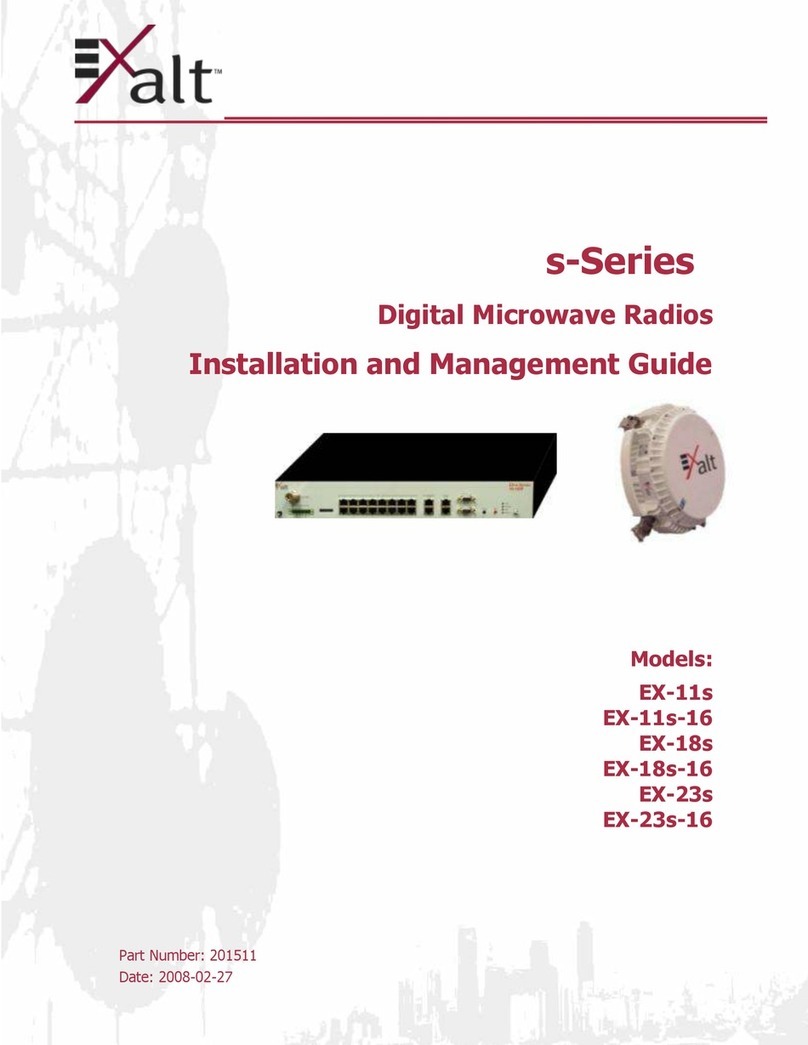
Exalt
Exalt S Series Programming manual
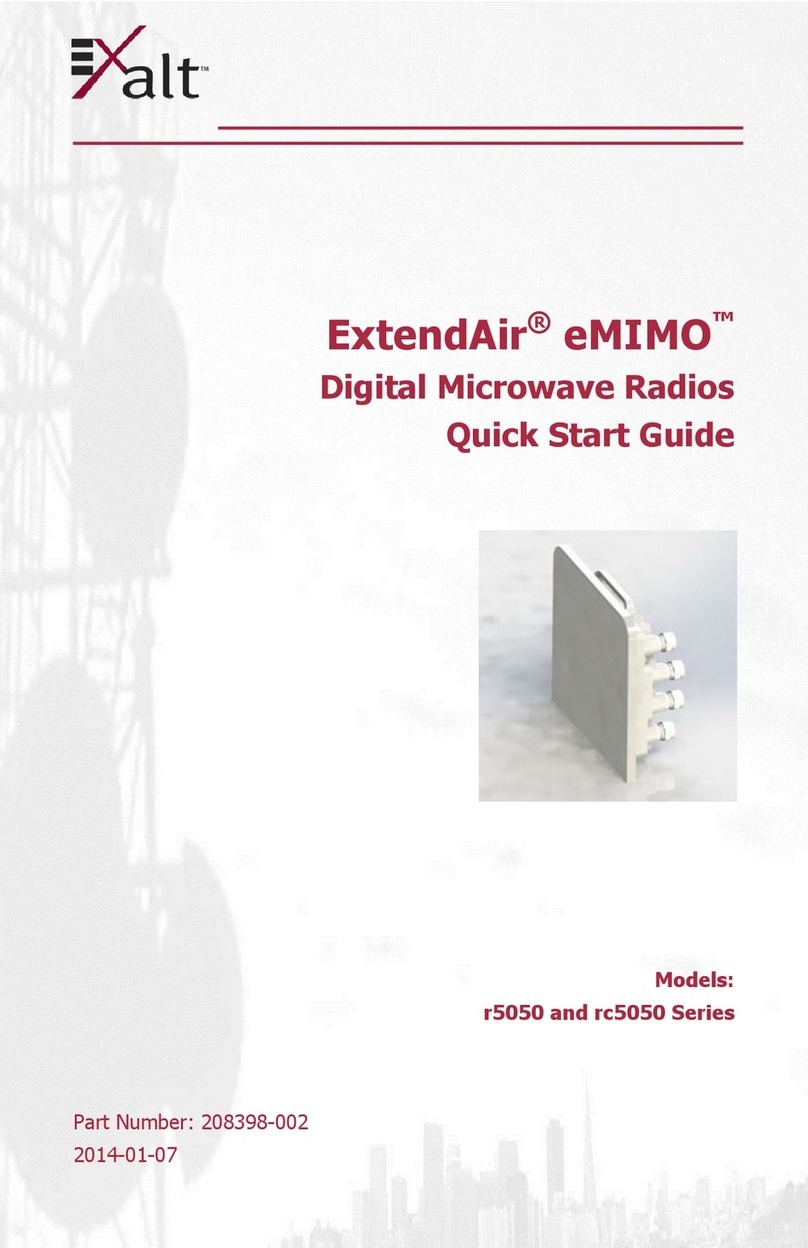
Exalt
Exalt ExtendAir eMIMO r5050 Series User manual

Exalt
Exalt ExtendAir G2 Programming manual

Exalt
Exalt ExtendAir r5015 Programming manual
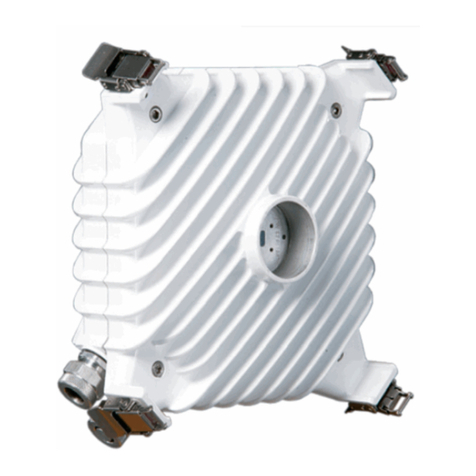
Exalt
Exalt rc06020 FCC Programming manual
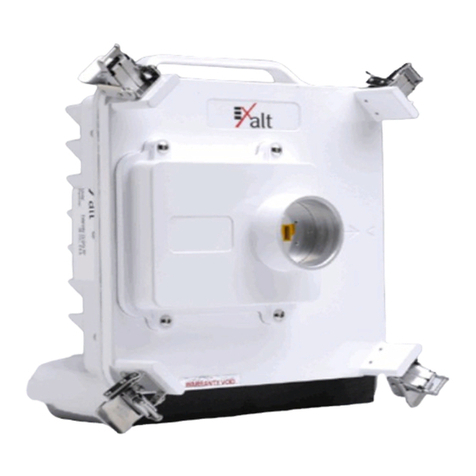
Exalt
Exalt ExtendAir series Programming manual
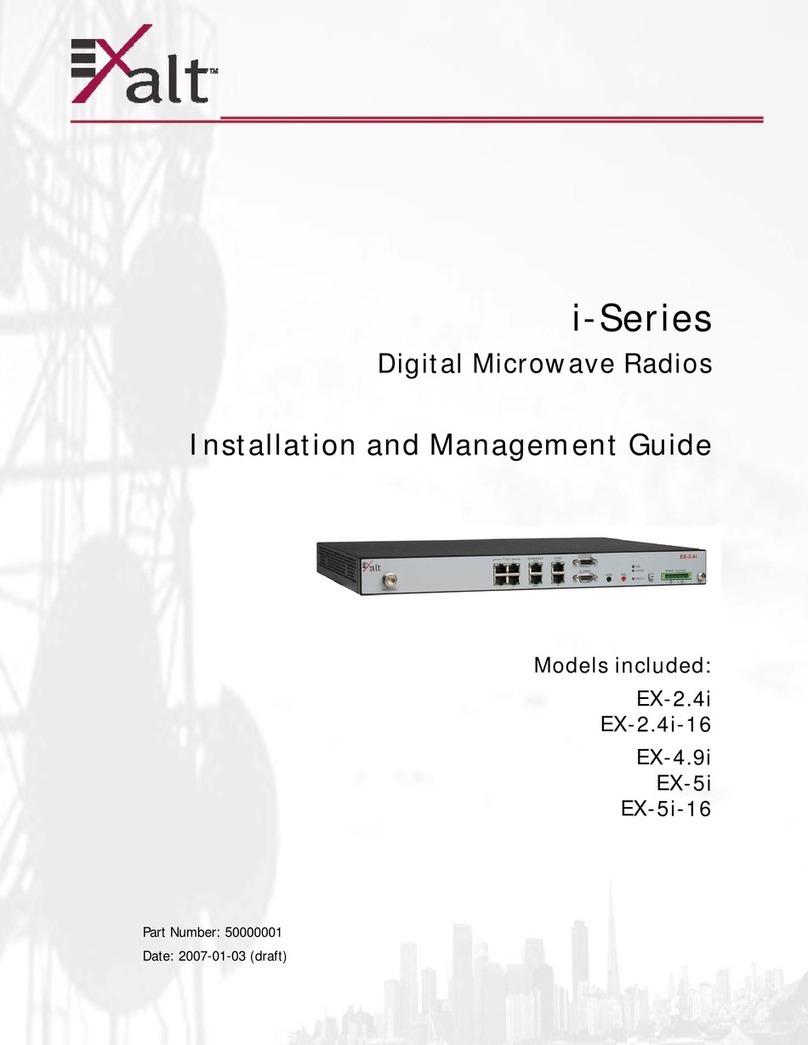
Exalt
Exalt EX-2.4i Lite Programming manual

Exalt
Exalt r5050 Series Programming manual
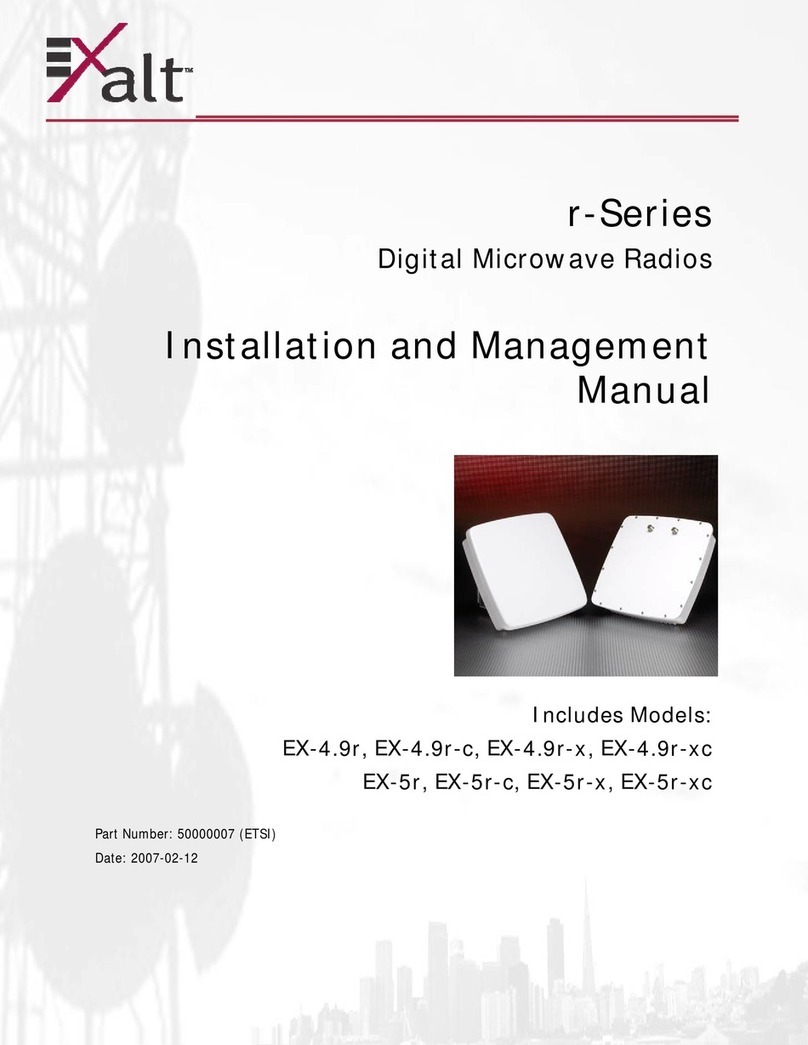
Exalt
Exalt r Series Manual

